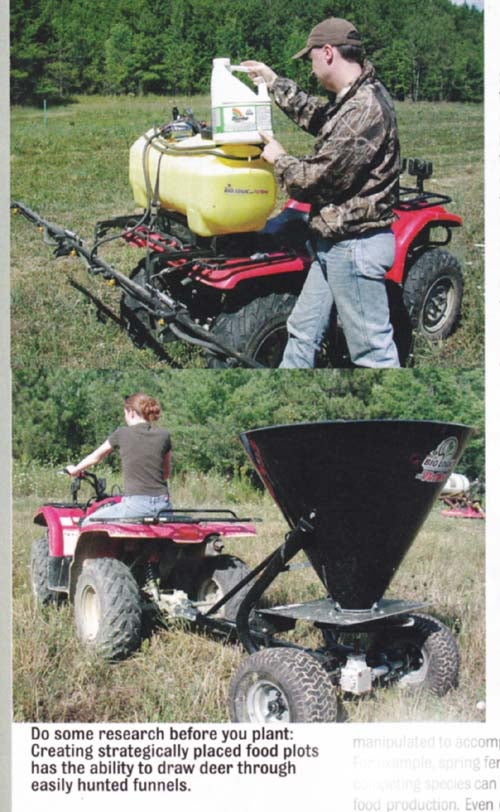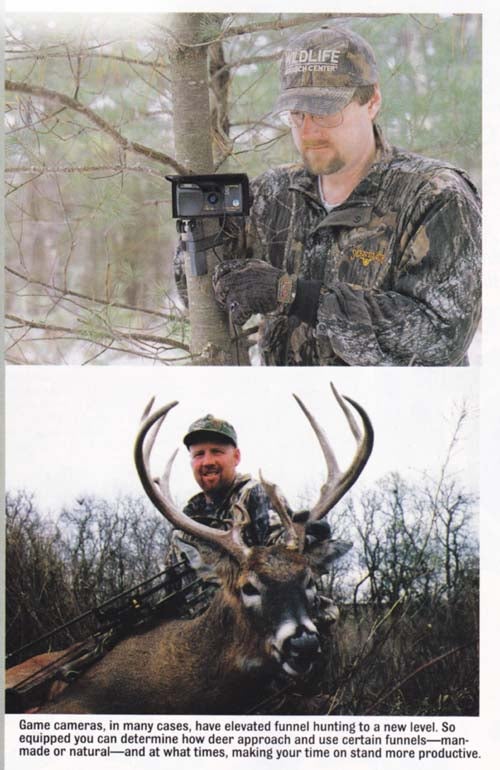Planning food plots for deer
Planning food plots for deer
A common mistake people make is not planning food plots for deer. Planning food plots for deer means figuring bedding areas, pinches to hunt, and size and type of plots. Planning food plots for deer will mean the difference between success and failure.
Lets get with Steve Bartylla and learn more on planning food plots for deer.
SETTING THE TABLE planning food plots for deer
ln later years, I began creating food plots to help funnel deer activity. Outside of the rut, most deer movement consists of traveling between bedding and feeding. Therefore, introducing a prime food source can lead deer past more advantageous stand locations.
Donnie Mc0lellan runs a very successful guide service in Grant City, Missouri Bucks
& Beards Outfitters consistently sends high percentage of their bowhunters home with trophy whitetails. One of the key reasons for this is the food plot strategy they employ.
“Finding big deer has never been a problem for me,” states Donnie. “They are here.’
It is getting my hunters into stands without tipping any deer that takes work. To avoid that, I spend countless hours walking ditches. They are one of the best ways to get in and out. In areas that don’t have good routes, I put in food plots so they draw deer through areas I can get my hunters into. I put a lot of work into it, it is worth it, though. A lot more hunters go home happy ”
To get the most from a new food plot, several factors should be considered. Because they can alter deer travels, the plots should be positioned to provide the most productive hunting. To do so, identifying bedding areas is key The plot should be located so stands can be positioned between bedding and feeding. Positioning the plot so a funnel lies between it and bedding is also advantageous. Also, undetectable routes to and from the stand should be available.
Donnie agrees with these food plot placement strategies wholeheartedly. “It all keys off of the bedding areas,” he says “I’m often shocked at how many people slap food plots out without first analyzing how they will affect deer movement and how they can place them to their own advantage. If I’m going, to go through the work to put one in, my plantings are going to be positioned so they funnel deer through areas that will do my hunters the most good !”
Additional steps can be taken to make them even better. Locating plots where deer feel safe leads to better hunting. Openings within the woods, remote corners of fields and areas bordered by thick cover all help provide the illusion of safety. If plots are positioned between 100 and 500 yards of the bedding areas, that also increases the likelihood of catching daylight movement.
Although plantings are more common, natural food sources can be manipulated to accomplish the same effect.
For example, spring fertilizing and removing competing species can increase a mast tree’s food production. Even overgrown meadows can be made more desirable through applying a lawn fertilizer and cutting them as a farmer would a hayfield. Taking these steps helps keep the grasses and weeds more digestible and nutritious, which will draw more deer. Like creating a new food plot, hunters can enhance existing food sources on locations that help funnel deer past potential stand sites.
MAKING THE BED planning food plots for deer
As stated previously, most non-rut deer travels are between bedding and feeding. Just as we can affect feeding locations with food plots and more desirable native forages, surprisingly we can also have an affect on bedding locations. Creating a bedding area can be created with a chain saw. First, select an are of woods and proceed to cut the trees within. When making the cut, begin it about three feet from the ground and cut down at a 45- degree angle, stopping about three-fourths of the way through. Now, the tree can be pushed over or left for the wind to do it.
One of the goals is to allow the branches to maintain a connection to the root system. Using this technique allows certain species such as maples and oaks, to bend without completely breaking. With the connection, the tree will to continue to grow, albeit at a much slower pace. To increase chances of survival, the cutting should be done in the winter , well before leaf-out. Keep in mind that some trees, such as poplar, birch and most pines, will snap every time, but their tops still provide food bedding cover.
This technique immediately creates a thick tangle of cover, as well as a bounty of food. The forest floor receives increased sunlight, which promotes the growth Of new greenery and
saplings. Along with that, the trees that retain the root connection provide Leafy growth for browse and buds for winter months.
To make these locations better still, we need to understand what deer seek for bed ding. Although there are exceptions, you will find that most bedding sites offer a combination of:
At least two escape routes.
Either thick cover or good visibility
Conditions allowing them to use their
sense of smell to cover their back.
These cutting technique provide the cover deer seek. Putting these efforts into locations that meet the other criteria on our list almost guarantees that deer will use them for bedding.
For example, let’s say we have a food plot along a creek bottom, flanked by ridges on each side. Applying our cutting technique the ridge side, just below the crest, would give them everything they desired. Not only do they have the thick cover, the slope also provides visibility.
By creating a bedding area on the sides of both ridges, deer would be able to choose which allowed the wind current to best cover them from the backside of the ridge. If they sensed danger, they could drop down, cut over, or dash along the ridge in either direction.
Because Nature rarely provides all of this, deer will pack into our constructed bedding sites.
Creating Trails
As in every technique discussed up to this point, knowing how the resident deer use the area is very beneficial. However, in creating trails, knowing whitetail travel patterns is essential. In order for this method to work best, you must know where the bedding and feeding areas are. Before we discuss how to create such trails, we should discuss what deer look for in selecting a travel route:
* Cover: Deer feel safest when traveling
in heavy cover.
* Gentle corners: Because they like to
see the path ahead of them, deer don’t like
taking 90 degree turns on their trails. Gently
sweeping corners allow the whitetail to see
the path before them and anticipate the dangers
that may lie ahead
* Ease of travel: Deer are lazy creatures by nature and,
all else being equal, will take the easiest route between
two points.
* Quickest route: The quickest route
between two points is a straight line. Deer
will usually select the straightest route that
provides cover, gentle corners, easiest travel
and a favorable wind direction.
With these factors in mind, we can now begin connecting food sources and bedding
areas By cleaning 5 foot-wide trails through the thickest cover between bedding and
feeding areas, we create trails that offer ease of travel, the feeling of safety and a
corridor that will be used heavily by deer. In areas that receive significant snowfalls, pulling a weighted sled along the.- trails can achieve outstanding results. In the winter months, two of the Northern whitetail’s top priorities are conserving energy and acquiring nutrition. During this difficult season, a whitetail’s life depends heavily on the amount of energy expended compared to nutrition taken in.
Creating trails through the snow that lead to the food sources creates an irresistible draw to deer enduring these conditions. So much so that once a trail is established, the heavy traffic from the deer will keep it open all winter long Because of this, the greater the snow depth, the more concentrated the deer activity becomes. Although it may seem like a lot of effort to create these trails, they are worth the effort.
Planning food plots for deer takes time, and a knowledge of the lay of the land and how the deer use it. Don’t skimp when planning food plots for deer.



